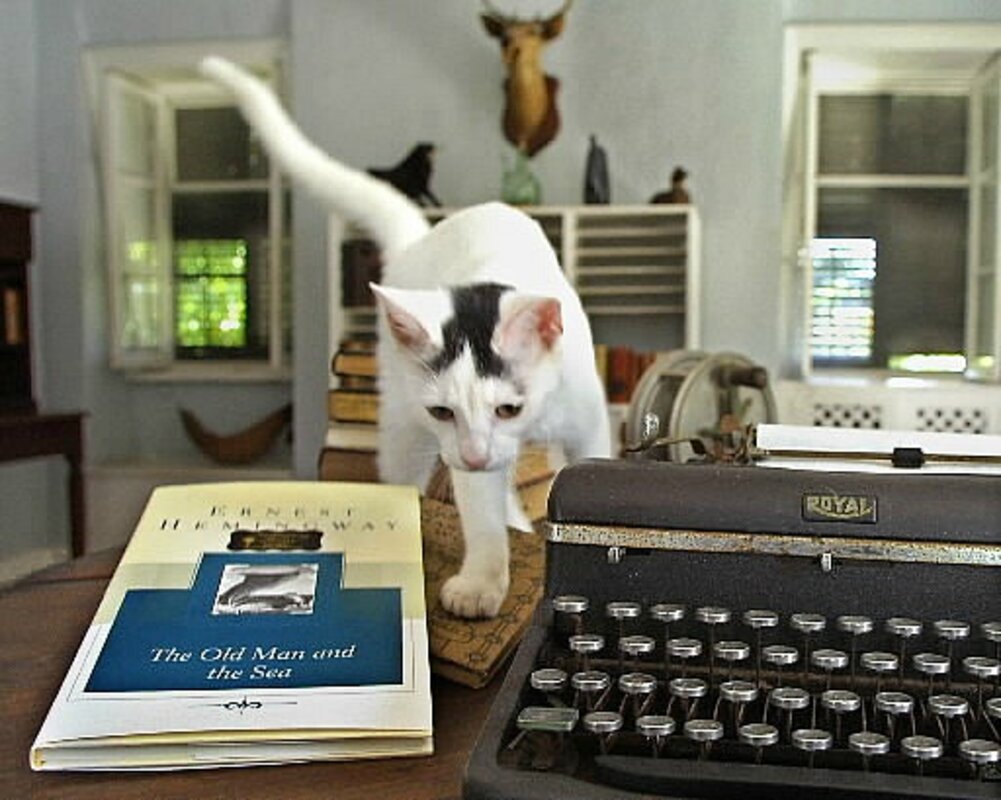How Ernest Hemingway's cats became a federal case
Loading...
Key West has a well-earned reputation as a haven for misfits, outcasts, and free-spirits. The locals donโt even consider themselves part of the United States of America. They refer to the place as the Conch Republic.
So it is more than a bit ironic that Key West is also the location of a knock-down, drag-out fight over the federal governmentโs power under the US Constitutionโs Commerce Clause to regulateโฆ cats.
And not just any cats, either. The cats being subjected to federal oversight are the descendants of the famous six-toed felines raised and cared for by former Key West resident and author Ernest Hemingway.
Mr. Hemingway spent most of the 1930s in Key West completing some of his best work. Now, his former house at 907 Whitehead Street is a museum open to daily tours and the occasional wedding.
It also continues to be home to 40 to 50 six-toed cats that are a living legacy of Hemingway. As in Hemingwayโs time, the cats are allowed to roam and lounge at will in the house and on the one-acre grounds.
Thatโs how the federal government became involved.
Ernest Hemingway: 10 quotes on his birthday
At some point several years ago, a museum visitor expressed concern about the catsโ care. The visitor took that concern all the way to the US Department of Agriculture and, literally, made a federal case out of it.
Soon USDA inspectors showed up in Key West. They said that if the museum wanted to display cats it needed an exhibitorโs license as required under the federal Animal Welfare Act. (Thatโs the same law that regulates circuses, zoos, and traveling dog and pony shows.)
Federal officials advised the museum that it also needed to take action to: Confine the cats in individual cages each night, or construct a higher fence around the property, or install an electric wire atop the existing brick wall, or hire a night watchman to keep an eye on the cats.
The museum was ordered to tag each cat for identification, and add additional elevated resting surfaces within the catโs enclosures.
USDA officials also advised that the museum would face fines for noncompliance.
The museum fought back, asking a federal judge in 2009 to rule that the USDA did not have authority over the Hemingway cats.
A lawyer for the museum told the judge that this was not a federal issue and that there were better-situated agencies in Key West, Monroe County, or the State of Florida to monitor and regulate the care and feeding of cats in Key West.
The judge disagreed. He ruled that the USDA was well within its authority to regulate the cats.
The museum appealed. In a unanimous decision announced on Friday, the three-judge panel agreed that the USDA does, in fact, have the necessary authority to regulate the Hemingway cats.
The court said the Animal Welfare Act (AWA) has been broadly interpreted by federal officials to authorize regulation of any exhibit of animals that are made available to the public.
There is no dispute that the museum includes scores of cats that are permitted to roam the grounds during visiting hours. Since admission is charged to see the house and the cats are part of the property, the AWA permits regulation of the cats, the court said.
The appeals court also concluded this broad interpretation of the AWA to extend to the regulation of cats in a museum did not exceed Congressโs power to authorize such federal regulations under the Commerce Clause.
The question, the court said, was whether the Hemingway cats โsubstantially affectโ interstate commerce.
The judges said they do.
โThe Museum argues that its activities are of a purely local nature because the Hemingway cats spend their entire lives at the Museum โ the cats are never purchased, never sold, and never travel beyond 907 Whitehead Street. But the local character of the activity does not necessarily exempt it from federal regulation,โ Chief Judge Joel Dubina said in his 13-page decision.
โThe Museum invites and receives thousands of admissions-paying visitors from beyond Florida, many of whom are drawn by the Museumโs reputation for and purposeful marketing of the Hemingway cats,โ Dubina wrote.
โThe exhibition of the Hemingway cats is integral to the Museumโs commercial purpose, and thus, their exhibition affects interstate commerce,โ he said. โFor these reasons, Congress has the power to regulate the Museum and the exhibition of the Hemingway cats via the AWA.โ
Chief Judge Dubina added a concession at the end of the decision.
โNotwithstanding our holding, we appreciate the Museumโs somewhat unique situation, and we sympathize with its frustration,โ he wrote. โNevertheless, it is not the courtโs role to evaluate the wisdom of federal regulations implemented according to the powers constitutionally vested in Congress.โ
One added irony in the cat case is that Whitehead Street bisects a section of Key West well known for the large number of chickens and roosters roaming freely through the streets.ย




